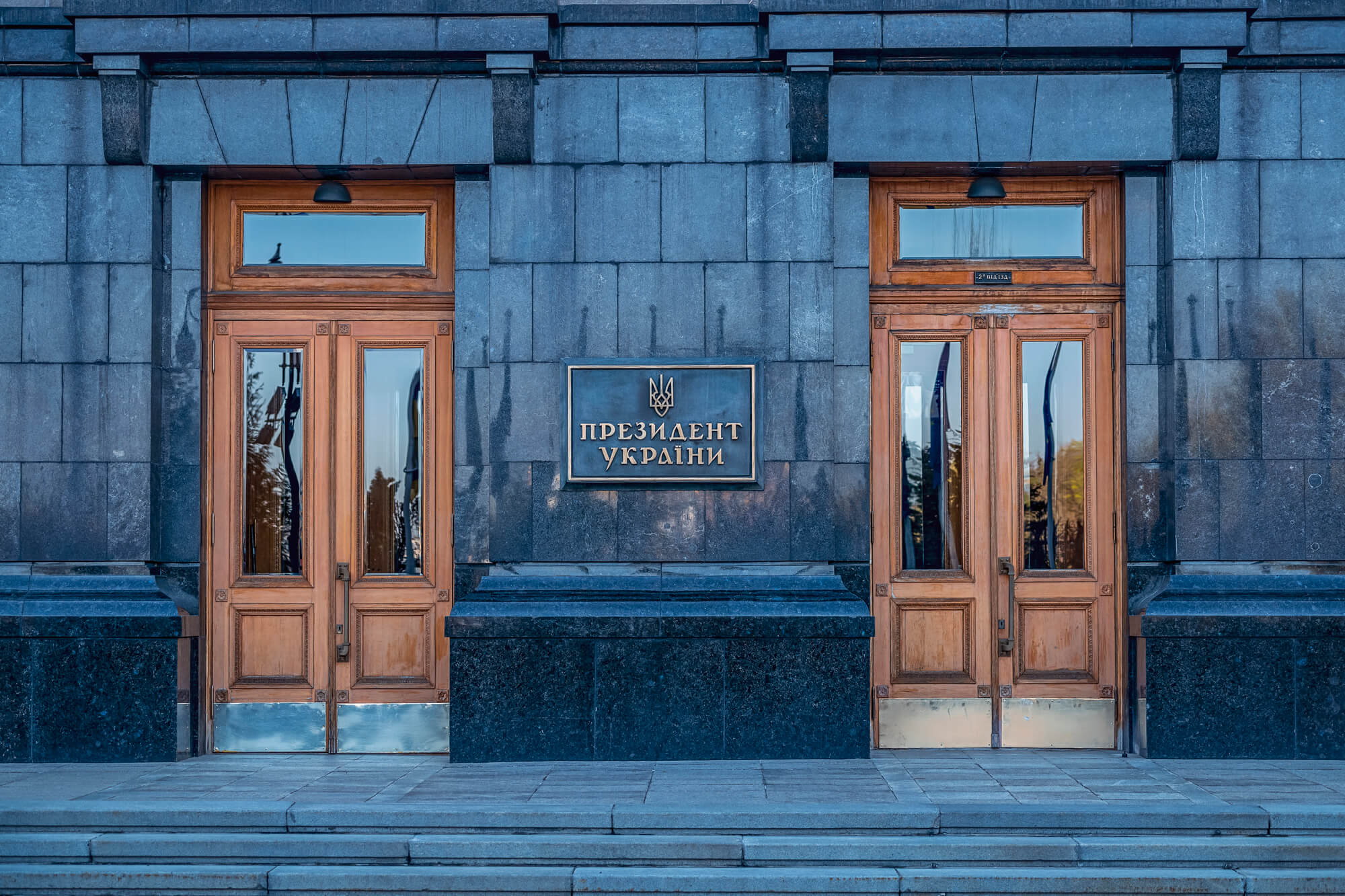The post-war reconstruction of Ukraine has drawn immense attention and a number of proposals have been put forward to outline a way forward. Contributions from CEPR, German Marshall Fund (GMF), CASE, CASE Ukraine and Anders Aslund and Andrius Kubilius (A&K), a collection of essays by CESifo, and several others have been released over the past months, each with a specific view or recommendations.
Given the uncertainty associated with the duration and intensity of the war and how it will eventually conclude, these publications generally outline a series of main strategic principles which are independent of the way in which the war ends. To help ongoing discussions on how the reconstruction should look, we have taken stock of these proposals and highlighted commonalities and differences across them. We are advantaged by the fact that the proposals have much in common. Although the devil is in the details, keeping in mind “the big picture” and agreeing on the main principles before diving into these details is always useful.
Note: in this op-ed we use the terms “reconstruction” and “recovery” interchangeably implying that reconstruction/recovery is not a return to the previous state but it is “building back better”.
What are common principles for reconstruction?
First and foremost, there is a consensus among proposals that minimizing the damage done by Russia today will help reconstruction in the future. Therefore, faster and more intense provision of weapons to Ukraine and strengthening sanctions on Russia are prerequisites for successful reconstruction. No less important is financial support to keep the Ukrainian economy running. At the same time, there is an understanding that some reforms enabling future recovery can be implemented even during the war, as suggested, for example, by the Memorandum of Understanding on provision of the EU macro financial support or the IMF program. The proposals also generally agree that at least in the early stages of Ukraine’s reconstruction a military insurance or other forms of government support are needed to de-risk private investments.
This reference to EU support underlines another key point, as all of the proposals agree that Ukraine’s reconstruction should be aligned with EU accession. This implies that Ukraine needs to preserve democracy and implement principles of market economy, the most fundamental of which is the rule of law. Similarly, and although not always mentioned explicitly, Ukraine’s NATO membership is no less important than entering the EU, as NATO membership or equivalent security guarantees are essential for lowering the probability of another Russian attack on Ukraine.
At the same time, the reconstruction should be owned by Ukraine so that Ukrainian players have an impact on reconstruction and have “skin in the game”. This can be realized by the creation of a specialized technocratic agency responsible for reconstruction and EU integration at the same time. The exact design, governance, structure, and spheres of responsibility of this agency are subject to discussion (e.g., the GMF proposal suggests a platform led by G7). While every proposal recognizes the necessity to involve non-EU players into reconstruction, its coupling with the EU accession naturally suggests that the EU will be heavily involved in a number of issues, such as business and trade regulation, energy sector, taxation and other legislation related to the acquis, as well as (re)construction of some infrastructure, such as border crossing points or railroads. Therefore, the presence of EU experts in the agency is highly desirable. At the same time, the Agency should be responsible for coordination of donors so that their funds are used the most efficiently.
Judicial reform (more broadly, law enforcement reform which includes not only courts but also prosecution and security services) is also noted as the fundamental priority for reconstruction. The necessary steps for implementation are quite clear but there is great resistance within the existing system, and therefore close monitoring of reform progress by donors is needed. Moreover, the Ukrainian government has a capacity constraint: it does not have thousands of honest judges to fill the existing vacancies. A solution could be hiring “outsiders” (lawyers who do not have experience as judges), but they need to be trained to international standards, and Ukraine would require support for this training.
Along these lines, there is a consensus that Ukraine needs public administration reform. This reform will enable all other changes, such as deregulation (economic liberalization), continuation of healthcare and education reforms, and reforms of other public services. In general, a high-quality bureaucracy is essential for an efficient (yet smaller) state which will be needed for the reconstruction and EU integration. In the previous years there were multiple attempts to reform the public service using, for example, project-based technical assistance and/or a dual-track approach such as introduction of directorates. Because of the great inertia of the system, these attempts had little impact. In an ideal world, Ukraine needs a highly professional and targeted corps of public servants whose integrity is beyond doubt and who are able to develop policies based on data and their professional judgment and take responsibility for implementation of these policies. In practice, however, positions in public offices are hardly attractive for high-quality people. This calls for a rationalization of salaries, along with the law enforcement reform – so that an official is not afraid that he/she will be put in jail for his/her policy choices.
The proposals on reconstruction also underline the importance of continuing reforms which have shown good results – most notably decentralization but also education, healthcare reform, and deregulation. Strengthening competition is also mentioned as a fundamental reform for increasing economic efficiency and lowering the impact of oligarchs. However, taking a closer look at these reforms, we can identify a few questions that need thorough discussion. For decentralization, the key issue is the distribution of powers between rayon and oblast councils and state administrations (and consequently between the President and Cabinet of Ministers). The logic of the reform suggests that most powers should go to local councils and their executive committees, while local administrations should become regional representatives of the central government and thus be appointed by the Cabinet of Ministers. However, this suggestion will likely face strong opposition from incumbents (reluctant to give away powers) and thus needs a wide social consensus. Likewise, optimization of school or hospital networks, merging of universities, or closing “diploma mills” will meet resistance at many levels. These reforms will require clear roadmaps and explanation of how the provision of respective services will be organized, how their quality will be enhanced, and what compensation will be offered to those who will lose because of these reforms.
There is also a general agreement that Ukraine’s recovery should be “green”, i.e. that Ukraine should reduce energy consumption by implementing energy-saving technologies and increase production of green energy (including hydrogen). In the mid-term, Ukraine can increase production of natural gas to replace gas previously supplied to the EU by Russia. The necessity to integrate Ukrainian and European energy markets is also unanimously recommended. At the same time, there is a question about the degree of decentralization in energy production (e.g. whether to leave central heating in multi-flat buildings or install individual heating systems there, and in the latter case, if an individual heating system employs renewable energy, how to sell the excess energy to the grid, and similar issues). These questions require rigorous consideration by experts and the government.
All of the papers surveyed here also agree that the reform of state-owned enterprises should continue because these enterprises are often ineffectively managed and a source of corruption. The majority of enterprises need to be privatized, and here the questions are (1) which enterprises to privatize and (2) what to set as the purpose of privatization – maximization of revenues from privatization? Speed? Something else? Enterprises that remain in the state property should receive proper corporate governance (some enterprises such as Naftogaz, Ukroboronprom, or Ukrainian railroads will require an individualized approach). While it is clear that government entities should not be managing SOEs to avoid conflicts of interest, the implementation of this principle – whether these SOEs will become independent entities or a part of a holding company (a National Wealth Fund) – is subject to further discussion.
Additionally, the need for social support (for veterans, people with disabilities, internally displaced people, returning refugees, and others) has greatly increased because of the war. The Ministry of Social Policy intends to change the approach to the provision of support, from a complicated system of privileges and (small) monetary payments to tailored support for a household aimed at making it self-sufficient. To implement this reform, the Ministry and local governments will require, among other, a large number of trained social workers and psychologists.
Finally, the considered papers support the idea of confiscating Russian assets to at least partially pay for the recovery of Ukraine. It is important to have a social and political consensus that the aggressor must pay and also a clear plan on how these monies will be utilized.
The consensus among these points is striking, but there are also divergences and several controversial issues which need to be highlighted.
Questions for discussion
The key priority in tax reform should be the simplification of tax procedures, as it is essential to address the main impediment for development – the discretion that tax authorities can apply to taxpayers amid a non-functional legal regime. While tax rates are not as critical, concentrating on reforming tax administration, which includes minimizing corruption opportunities and streamlining processes, can effectively address these issues. This also applies to customs, where eliminating tax privileges as well as harmonizing data exchange with the EU countries are necessary to create a level playing field.
Two other issues that inspire heated debate are pension reform and labour market reform. Given the large number of refugees and internally displaced people, these questions have become even more acute. With regard to the pension system, the main question is the introduction of the second pillar (mandatory savings). The underlying issues include funds management (centralized or decentralized, public or private, allowed investment vehicles) and financing of this pillar. The attempts to reform the labour market are usually opposed by those willing to preserve the current system with strong protection of workers (as opposed to higher flexibility). In practice this protection applies only to people employed officially and it may actually decrease employment (companies may be reluctant to hire workers whom they cannot fire). Moreover, it created two parallel labour markets – official and semi-official (contract) labour relations. In our view, greater labour market flexibility coupled with active labour market policies, such as (re)training should be a priority. They should be aimed at higher labour force participation – of women, elderly people, representatives of vulnerable groups. The question of pension reform should be postponed and considered together with tax reform since pension payments make up a large share of government expenditures.
All the papers on reconstruction agree that, despite heavy mining of land and blockade of ports, the Ukrainian agricultural sector is doing reasonably well, and when the war ends, it should recover rather quickly. However, to increase this sector’s efficiency and attract investment (including FDI), opening the land market is advised, i.e. permission to purchase land for companies and for foreigners (except Russians). There can be some limits on the area which one person or enterprise can purchase, requirements to company transparency and other market regulations which can be discussed for the continuation of land reform. Another “land-related” issue is the land market in municipalities: the reconstruction will require building new houses and social infrastructure, and intransparency or corruption in the land market should not become an impediment for that. Land market design requires both technical assistance and a wide social discussion to arrive at an acceptable solution.
Finally, two related controversial issues are political reform and media market reform. It is no secret that oligarchs often use their control of the media for political purposes. On the other hand, since Ukraine does not have an established tradition of ideological parties, media presence is a significant factor of electoral success. Some suggestions include limiting sources of party financing to the state budget only, limiting media presence of political parties, or limiting impact of certain individuals and entities on media, each of which may be controversial and all of which have trade-offs. The exact changes to regulation of political parties and the media market need a thorough stakeholder discussion.
This brief description of the various approaches to reconstruction shows that current suggestions have much in common, and while they provide general recommendations, many of them avoid specific recommendations on the issues that Ukrainian society has been discussing. Further proposals on reconstruction, bringing together all relevant stakeholders, can dive deeper into the issues covered here to develop specific policy solutions.
The summary of the above discussion is presented in the following table.
| consensus questions | issues to resolve (technical assistance may be needed) |
| Ukraine aims at the EU and NATO and introduces necessary reforms | aid conditionality; donor coordination |
| Ukrainian ownership of reconstruction; one coordinating agency | agency structure, governance, spheres of responsibility |
| Judicial system/ law enforcement reforms are fundamental |
|
| public service reform redesigned and implemented |
|
| decentralization should continue | distribution of powers between local councils and administrations; between president and Cabinet of Ministers |
| energy sector |
|
| SOE reform |
|
| social support schemes |
|
| confiscation of Russian assets | procedures for confiscating Russian assets in Ukraine and other countries |
| controversial questions | suggestion |
| tax reform |
|
| pension system |
|
| labour market reform | aim at flexibility and active labour market policies (re-skilling) |
| land market |
|
| political system (parties) | party financing schemes |
| media | restrictions and transparency of media ownership, media market structure |
Authors: Dmytro Boyarchuk, CASE Ukraine, Christopher Hartwell, Zurich University of Applied Sciences, Yuriy Gorodnichenko, University of California, Berkeley, Ilona Sologoub, VoxUkraine
Attention
The authors do not work for, consult to, own shares in or receive funding from any company or organization that would benefit from this article, and have no relevant affiliations





